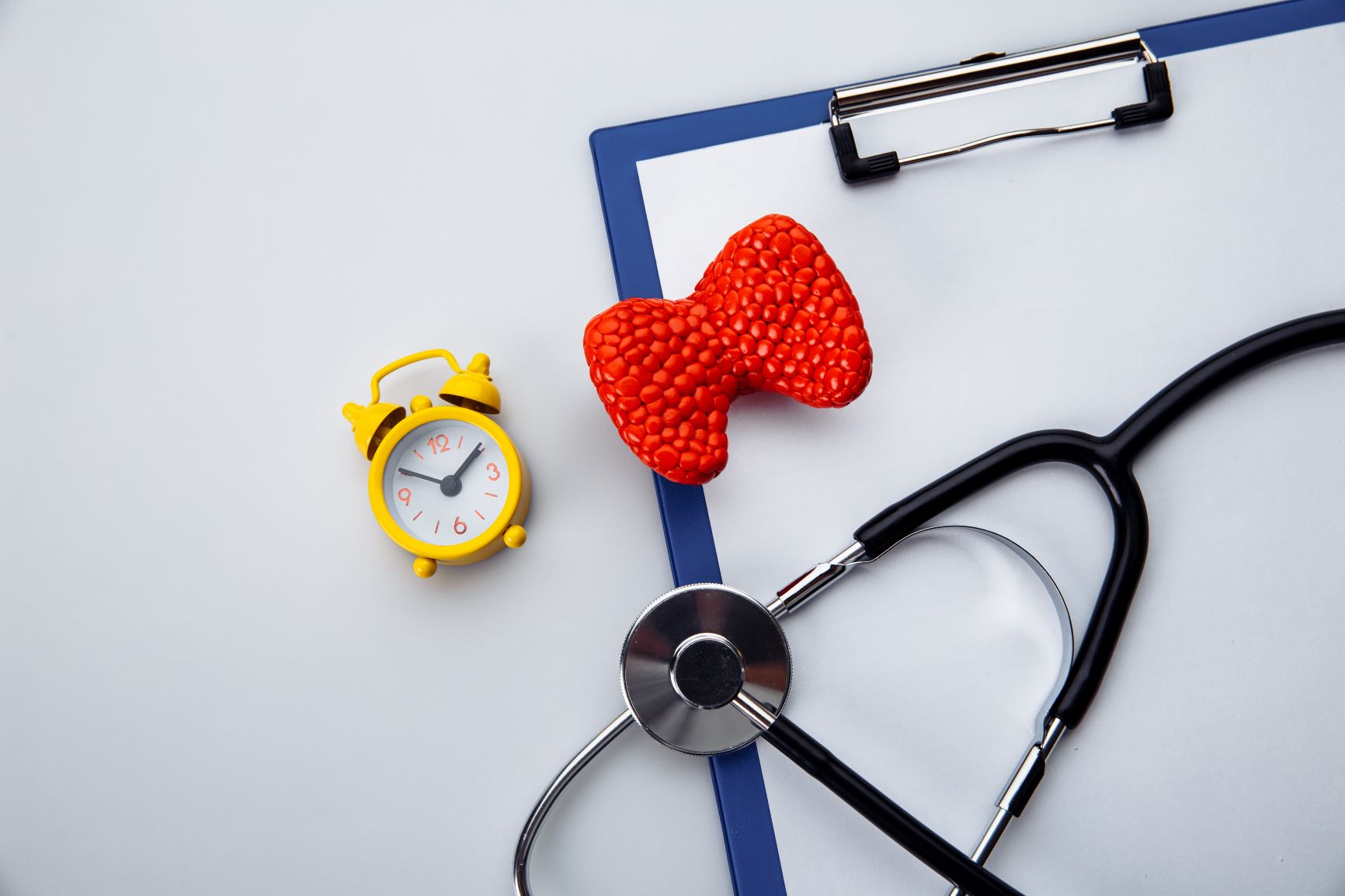
2 August 2021
10 things you need to know about Hashimoto’s disease
The thyroid gland is an odd butterfly-shaped gland located in the antero-posterior part of the neck. It is described as an endocrine organ due to the fact that three main hormones are secreted into the bloodstream: triiodothyronine (T3), thyroxine (T4) and calcitonin. A thyroid disorder called Hashimoto’s disease may develop when there is a significant increase in inflammation in our body, which damages the structure of the gland and makes it impossible to produce the necessary hormones. The first symptom of Hashimoto’s disease is an enlargement of the thyroid gland (goiter). This causes the front of the neck to look swollen and it may be harder to swallow.
Below you can find the most important information about Hashimoto’s disease.
-
Hashimoto’s disease is a genetic disorder
Hashimoto’s disease is a type of autoimmune disease that has a genetic background. If one family member suffers from an autoimmune disease, the rest of the family is more likely to develop it. A link has been documented between the occurrence of this disorder and the presence of so-called tissue compatibility antigens: HLA-B8, DR-3, DR-5, as well as the polymorphism of the CTLA-4 gene. So, if you already have been diagnosed with this disease, ask your loved ones to be tested and vice versa. If your mothers, grandmothers, aunts have already been diagnosed with Hashimoto’s, make sure to check your test results.
-
Hashimoto’s symptoms can be easily overlooked
Hashimoto’s disease usually takes years before the symptoms become disturbing and we decide to check them at the doctor’s. They come gradually and are very non-specific, which makes them easy to overlook. Among as many as 45 various symptoms that indicate dysfunctions of the thyroid gland, typical symptoms of Hashimoto’s include: fatigue, brittle nails, constipation, pale skin, swollen tongue, facial swelling, weight gain, prolonged and excessive periods, joint pain and depression. Unlike other conditions, Hashimoto’s disease takes a long time to develop and can take many years to appear after the first symptoms are spotted.
-
Women are much more likely to develop Hashimoto’s disease than men
Hashimoto’s disease is 10 times more common in women than in men. This condition mainly affects women aged between 30 and 65, however it is more and more common for younger women and girls to develop it as well. After the age of 60, the incidence of Hashimoto’s disease increases significantly, hence it is so important to test TSH levels prophylactically once a year in all people regardless of sex over the age of 60.
-
May have life-threatening effects on the body
Hashimoto’s disease predisposes to other diseases that may contribute to lowering the quality of life and lead to developing other metabolic conditions. It often correlates with a high cholesterol level, cardiovascular diseases, joint disease, hypertension and metabolic disorders such as insulin resistance, type 2 diabetes and celiac disease. These conditions, when untreated, may lead to a serious threat to our health or even life.
-
Hashimoto’s disease may affect fertility and sex-drive
Often, Hashimoto’s hypothyroidism is also accompanied by infertility problems such as difficulty getting pregnant, miscarriages, irregular and anovulatory cycles. This disease is also associated with low sex-drive both in men and in women. In men suffering from Hashimoto’s disease, the production of sperm is also reduced, its quality and viability deteriorates. All this will adversely affect the success of conception and make it impossible to get pregnant.
-
The thyroid gland accumulates hormones that in excess can be harmful to the body
The thyroid gland stores a large amount of hormones. If it secretes very large amounts of them into the bloodstream, this constitutes a very undesirable situation for our organism. This condition is called thyrotoxicosis. Often, a large release of thyroid hormones into the bloodstream occurs at the very beginning of Hashimoto’s disease. It may then be mistaken for hyperthyroidism. However, it is just a temporary state as it often happens that temporary hyperthyroidism turns into full-blown hypothyroidism, which is often only visible at this stage.
-
Hashimoto’s disease is not easy to treat
Explaining Hahimoto’s disease helps patients learn how to fight it with medications, understand why they have the disease, what it means for their future and how to reverse it. There is little knowledge about this and on the Internet you can come across contradictory information and recommendations. A proven, reliable source of information will help the patient to properly manage the whole treatment plan and lifestyle changes to take proper care of your health. Lucky for you that you’ve found us! 🙂
-
Both too little and too much iodine can cause Hashimoto’s disease
Iodine is essential for the proper functioning of the thyroid hormones. However, both too much and too little iodine supply may be harmful for the thyroid gland and may lead to hypothyroidism. Most countries, like the USA or Poland add iodine to salt (known as salt iodisation) to prevent from population deficiencies. People who are predisposed to thyroid diseases should not consume such a kind of salt, instead Himalayan salt is recommended.
-
Appropriate treatment will not necessarily eliminate thyroid problems completely
Levothyroxine sodium (LT₄) is one of the most commonly prescribed medications for the treatment of hypothyroidism. However, its proper use is extremely challenging. In 2011 levothyroxine was the second most often prescribed medication in the USA (104,7 million prescriptions), and in 2013 more than 115 million prescriptions were filled for LT₄ containing preparations. Pharmacokinetics of levothyroxine in the treatment of hypothyroidism is an often avoided issue. In more than one third of patients it is not possible to achieve an adequate dose of the medication despite often monitoring of biochemical parameters (standard TSH and FT4). Many different factors, both physiological and pathophysiological, may significantly affect the bioavailability of levothyroxine. Its dosage should take into account the age and the clinical condition of the patient, laboratory blood tests results as well as the factors affecting the bioavailability of the medication. Factors that may significantly affect therapeutic level of levothyroxine in the blood include physiological factors, pathophysiological factors, medication form, the time of taking the medication, diet and eating habits, and patient compliance with medical advice.
-
Hashimoto’s disease and hypothyroidism are not the same thing
Although Hashimoto’s disease is the main cause of hypothyroidism, they are not the same thing. A person can have one, and not the other. Hashimoto’s disease is a progressive autoimmune disease, in which the organism attacks the thyroid gland leading to hypothyroidism. A person with early symptoms of Hashimoto’s disease may not have hypothyroidism but may suffer from an autoimmune attack on this organ. On the other hand, hypothyroidism is a condition that occurs due to low levels of thyroid hormones in the body. Most of the cases of hypothyroidism can be treated with an adequate amount of thyroid hormones. Hypothyroidism may also develop as a result of surgical removal of the thyroid glands or iodine deficiency.






